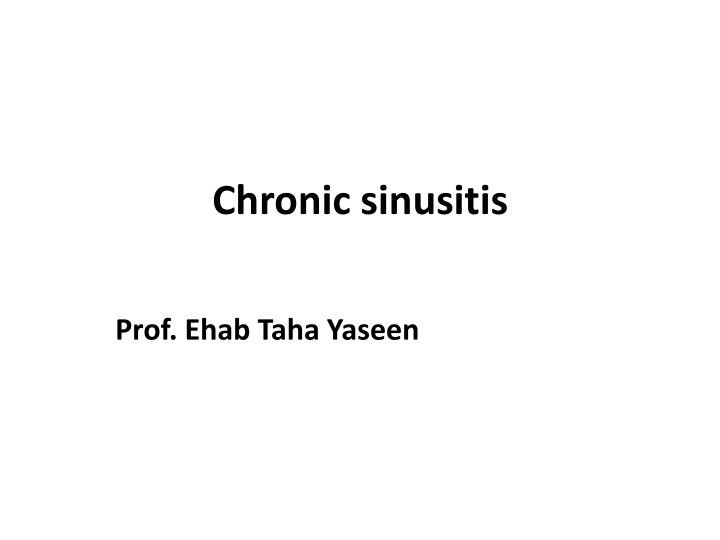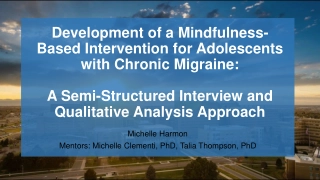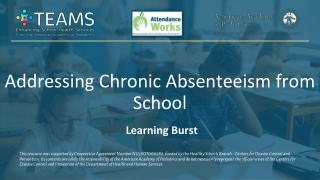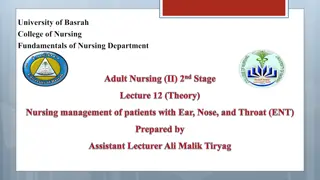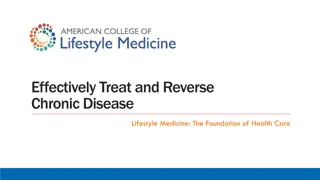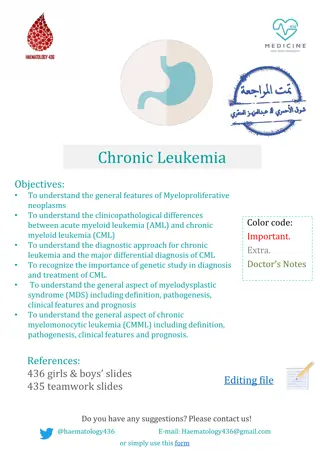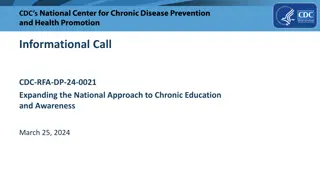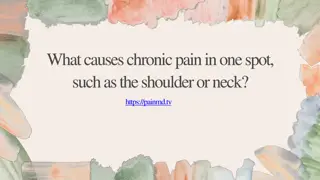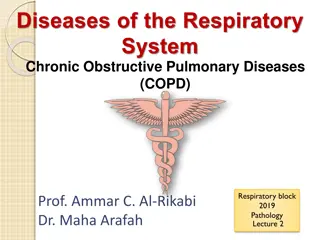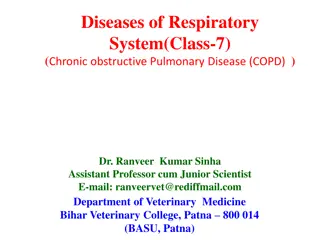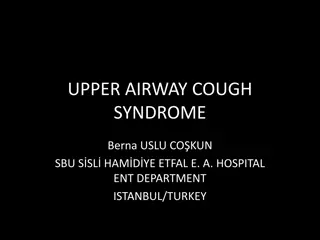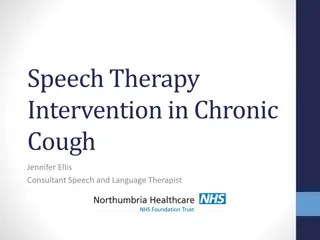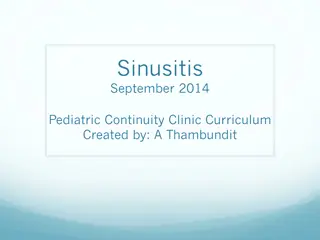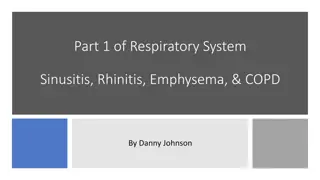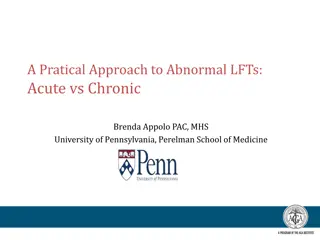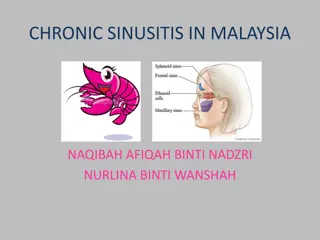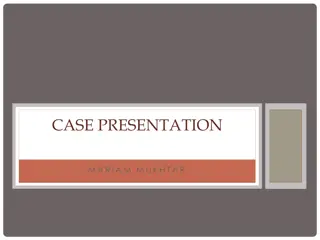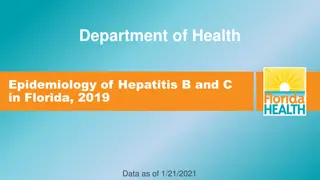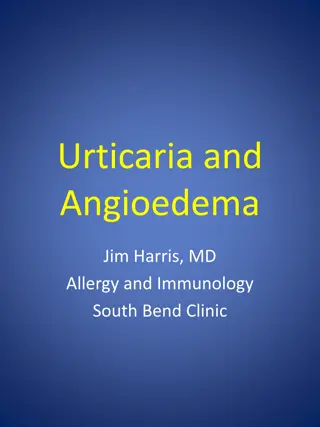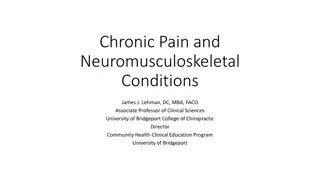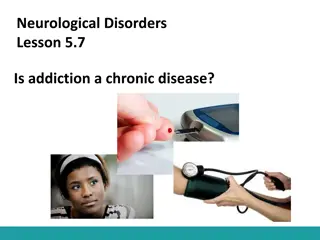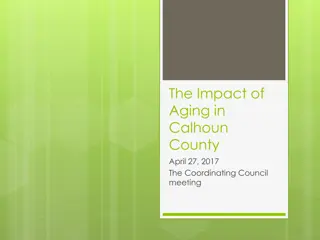Chronic sinusitis
Inflammation of the paranasal sinuses for over 3 months, chronic sinusitis presents with various symptoms like nasal discharge, obstruction, headache, and more. Learn about its pathology, symptoms, signs, investigations (including endoscopy and CT scan), and medical treatment involving antibiotics, steroids, and antihistamines.
Download Presentation

Please find below an Image/Link to download the presentation.
The content on the website is provided AS IS for your information and personal use only. It may not be sold, licensed, or shared on other websites without obtaining consent from the author.If you encounter any issues during the download, it is possible that the publisher has removed the file from their server.
You are allowed to download the files provided on this website for personal or commercial use, subject to the condition that they are used lawfully. All files are the property of their respective owners.
The content on the website is provided AS IS for your information and personal use only. It may not be sold, licensed, or shared on other websites without obtaining consent from the author.
E N D
Presentation Transcript
Chronic sinusitis Prof. Ehab Taha Yaseen
Objectives By the end of the lecture, you will be able to 1. To know the main clinical features of chronic sinusitis 2. To classify chronic sinusitis 3. To assess patient presented with chronic sinusitis 4. To predict the main type of surgery
Definition: Is inflammation of the lining mucosa of the paranasal sinuses for more than 3 months Better terms Types 1. Specific (TB, Fungal, etc ) 2. Non specific 2 types - Simple (infective) (repeated acute rs) - Mixed type (infective and VMR) usually there is predisposing factor as obstruction of sinus ostia
Pathology: Edema Polyposis Chronic inflammatory cellular infiltration Fibrosis of submucosa Multiple small abscesses Metaplasia and glandular hypertrophy.
Symptoms: Postnasal or nasal discharge. Nasal obstruction Recurrent pharyngitis (sore throat). Headache. Anosmia or cacosmia Cough Eustachian obstruction are common secondary effects Constitutional symptoms are usually mild or absent.
Signs: Often unremarkable and non-specific, You may see (endoscopy is important tool ) Signs may include:- polyps septal deviation signs of allergic rhinitis (extrinsic rhinitis) vasomotor rhinitis (intrinsic rhinitis) postnasal drip granular pharyngitis you may notice bad smell features of Eustachian obstruction.
Investigations: Endoscopy (again) CT scan is the gold standard investigation 1. To prove the diagnosis 2. Looking for predisposing factors (anatomical variation or pathological findings) 3. To address the anatomy (if surgery is decided) 4. To exclude the presence of complications (especially orbital and intracranial complications)
Treatment: Medical: for 4-6 weeks, this will include: Antibiotics are given orally and should cover both aerobic, anaerobic, gram positive and gram negative bacteria e.g. amoxicillin + metronidazol or amoxicillin + calvulonic acid. Steroids as nasal spray Antihistamines especially when there is allergy. Analgesic usually not needed. Surgical : treatment is indicated when there is failure of medical treatment, and these may include: Intranasal antrostomy. (obsolete) Caldwell Luc operation. (only one indication) Internal and external ethmoidectomy. (obsolete) Internal ethmoidectomy. (obsolete) External fronto ethmoidectomy. (obsolete) frontal sinus obliteration. (obsolete) Sphenoid surgery is usually part of surgery on the other sinuses. Functional endoscopic sinus surgery (FESS).
The gold standard operation nowadays is the FESS: Aims of FESS are to Remove diseased mucosa, polyps, bones and widen sinus ostia Restore sinus ventilation Restore normal mucocilliary clearance What are the indications of FESS 1. Chronic rhinosinusitis after failure of medical therapy 2. Recurrent acute rhinosinusitis (more than 3 attacks per year in the presence of predisposing anatomical variation) Chronic Specific Sinusitis (Fungous infection) Usually due to aspergilli, common in immune compromised patients as diabetic or uraemic patients. Treated by evacuation surgery and systemic antifungal agents as amphotericin B.
Case 35 y old man seeking advice to remove his tonsils because of recurrent infection that affect his QOL. How you will approach the diagnosis in this patient? History Examination Investigation Treatment
